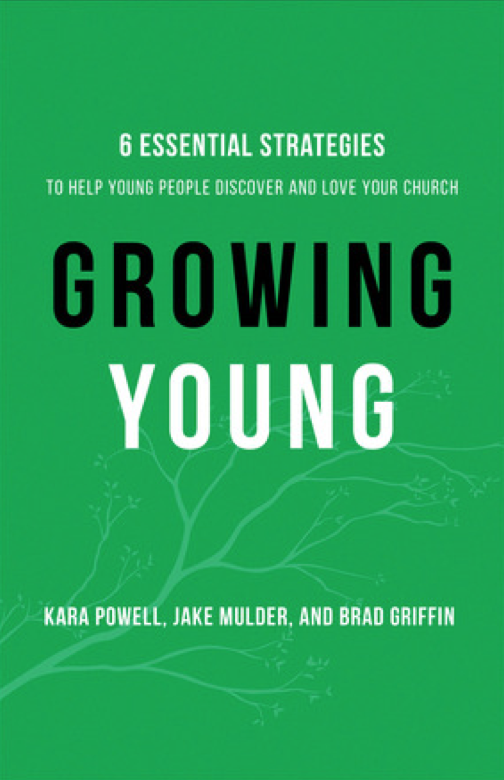
Growing Young: 6 essential strategies to help young people discover and love your church
By Kara Powell, Jake Mulder, and Brad Griffin
Reviewed by Darren Cronshaw
(Grand Rapids: Baker, 2016)
The church in the Western world is facing an exodus of young people from our churches. Most churchgoers know this anecdotally. Some major research projects have analysed the demographic trends, sought to explain why, and most importantly pointed in directions to help reverse the trend. One of the most influential hubs for such research is the Fuller Youth Institute (FYI), directed by Kara Powell. Their recent book Growing Young, describes the findings and implications from their 2012-2015 Churches Engaging Young People (CEYP, pronounced “keep”) Project.
Instead of focusing on the aging demographic in churches or what most churches are not doing to engage youth, this study looks at what many churches are doing to be “growing young”. FYI’s previous major project “Sticky Faith” focused on young people themselves and what helps them stick at their faith and church, but Growing Youngfocuses on the churches themselves. What can churches do to help young people passionately connect with God through a faith community? It dispels myths that churches growing young need to be a precise size, off-the-charts cool, have a big budget or building, and/or have a hyper-entertaining program with watered down teaching.
There were 60 people involved in the research, researching 259 congregations and going deeper with 41 exemplary churches including interviews with 535 young people, parents, volunteers and staff. It was a comprehensive project and helpful to read about the methodology in the appendix. The project found that the Churches with proven effectiveness in engaging young people displayed six core commitments:
- Unlock keychain leadership – empowering others especially young people to let lose their creativity
- Empathize with today’s young people – rather than judging or criticizing
- Take Jesus’ message seriously – and invite people to a Jesus-centred life (and avoid focusing on abstract beliefs, formulaic claims as well as “moralistic therapeutic deism”)
- Fuel a warm community – peer and intergenerational friendships are more important than cool programs
- Prioritize young people (and their families) everywhere – involve and support them generously
- Be the best neighbors – and invite young people to join in with neighborhood mission
The chapter on each core commitment includes illustrative stories and idea for action, and a separate chapter unpacks a plan for change for growing young in different contexts. The writers stress this is not just for well-resourced large churches but for communities of different shapes and sizes. The chapters also feature insightful quotes from youth leaders and young people that offer snapshots into dynamics of churches growing young, for example:
“Teenagers know they are important because they are involved in ministry. They are treated as full-fledged members of the church, not just kids to be entertained.” (Angela, church leader, p.196)
“The number one adult who’s influenced me is Brent. There was a time in the fall when I was suicidal again and he was, like, visibly upset. He said some things like, “Don’t do that … we need you.” And he hugged me and teared up. I think he believes in me more than anyone else. He gets me.” (Allen, age 21, p88)
Growing Young offers helpful strategic ideas, but perhaps it’s most important finding is what ultimate questions young people are asking, and what they foundationally need. Growing Youngsuggests the three main questions of young people are about:
- Identity: Who am I? (scrutinizing “me”)
- Belonging: Where do I fit (exploring “us”)
- Purpose: What difference do I make (wondering about “our world”) (pp.95, 115-6)
Powell et.al. urge responding to these questions with grace, love and mission. These are the qualities the church holds intrinsically, and which best address young people’s painful dilemmas and the quests for identity, belonging and purpose. We ask these questions at all life stages, but they are especially acute for younger generations, and they are asking them earlier and later, and thus longer.
Growing Youngis a thoroughly-researched yet broadly accessible book that deserves to be on the desk or device of generational pastors and volunteers, senior pastors and church leadership teams, and those who are teaching or researching youth ministry. More details are accessible at ChurchesGrowingYoung.org
This review was originally published inWitness: Journalof the Academy for Evangelismin Theological Education 32 (2016).
